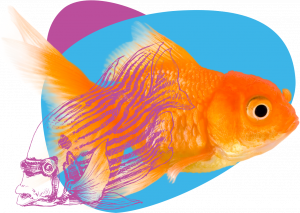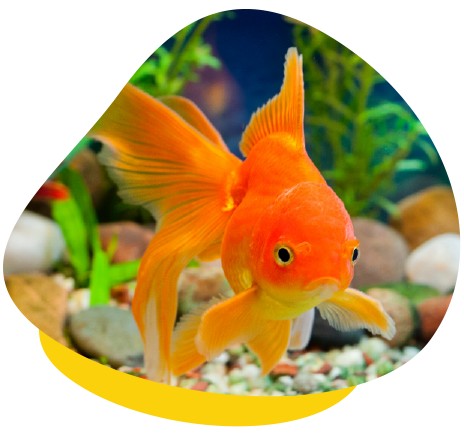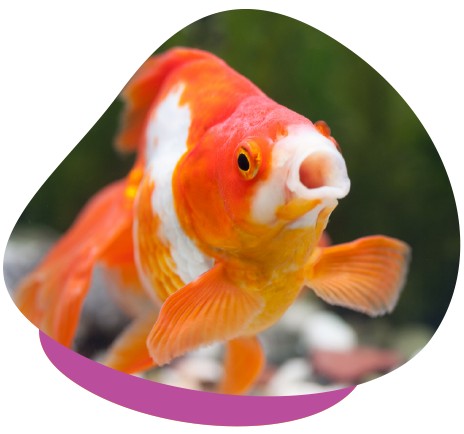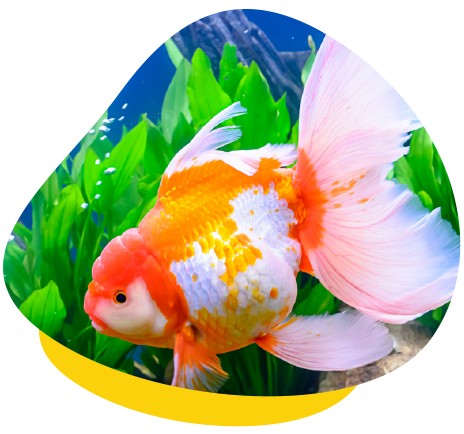

Goldfish (Carassius auratus) can be described as an adaptable, intelligent fish, and are the most popular of all ornamental fish.
They descendants of carp fish and have been selectively bred to develop into the numerous fancy breeds available today. They are relatively long-lived fish, which, with proper care, can reach ages of 20 years and grow up to 20cms.
Goldfish are social and often do better when housed with other goldfish. They can also be taught to do tricks.

Feeding Your Goldfish
There are many commercial diets for goldfish. However, like most animals, variation is important in a healthy diet. Goldfish are foragers and will eat both sinking and floating foods. If multiple goldfish are housed together, it is a good idea to feed them from a few different spots in the tank and use a combination of foods so that all fish can eat. Some fancy breeds will need special consideration at feeding time due to their slowing swimming habits or their specialised eye positions.
A good goldfish diet should include a high-quality pellet or gel food as well as vegetables such as peas, spinach or kale. Providing access to safe plants and occasional small invertebrates as treats is also recommended. The amount of food fed should not exceed what the fish can eat in 5 minutes. A more accurate gauge is using the size of your fish’s eye to size up how much to feed at each meal. This small portion of food should ideally be provided 2-3 times a day.
Water Temperature
A goldfish tank should be maintained at 20-25oC. Depending on your climate, your tank may require a small tank heater. A neutral to slightly alkaline pH of 7.4 is preferred (pH of 7-8.0 is tolerated).
Aquarium Substrate
Care should be taken to avoid using pebbles or substrate that is small enough for your goldfish to ingest. The recommended and safer options are a sand-based substrate or pebbles twice as large as your goldfish’s mouth.

Decorative Ornaments
Whether natural or artificial, furniture and plants can be a great addition to your goldfish’s tank. However, particularly for some fancy breeds, careful selection of furniture that is not sharp or pointy is important to avoid injuries.
Common Diseases in Goldfish
Goldfish are robust fish. Many of the common problems we see occur when their tank environment is not maintained at optimal conditions. Common conditions include buoyancy disorders, bacterial infections, gastrointestinal parasites and ingesting foreign bodies.
A healthy Goldfish should swim around actively with no floating or sinking issues (positive or negative buoyancy issues) or lean to the side for prolonged periods. They should have no skin blemishes and have an undamaged tail. Any changes to their normal behaviour, body condition, appetite or general appearance can indicate more serious illness and should be investigated.
Quarantine
It is recommended that any new fish being added into your aquarium should ideally undergo a 4-week quarantine period to reduce the risk of disease spreading to your tank. This period also allows them to de-stress after travelling home.
Are You Looking for More Information?
The Unusual Pet Vets have several veterinarians that will see fish. We recommend health check-ups for fish every 6-12 months. However, for any non-urgent questions, all our clinics can be emailed or called for advice.


